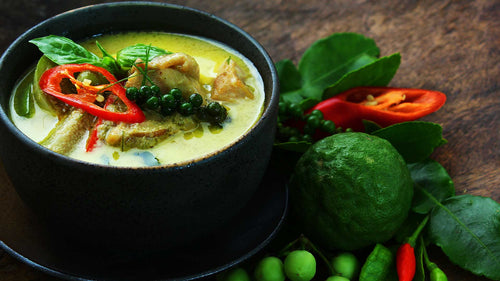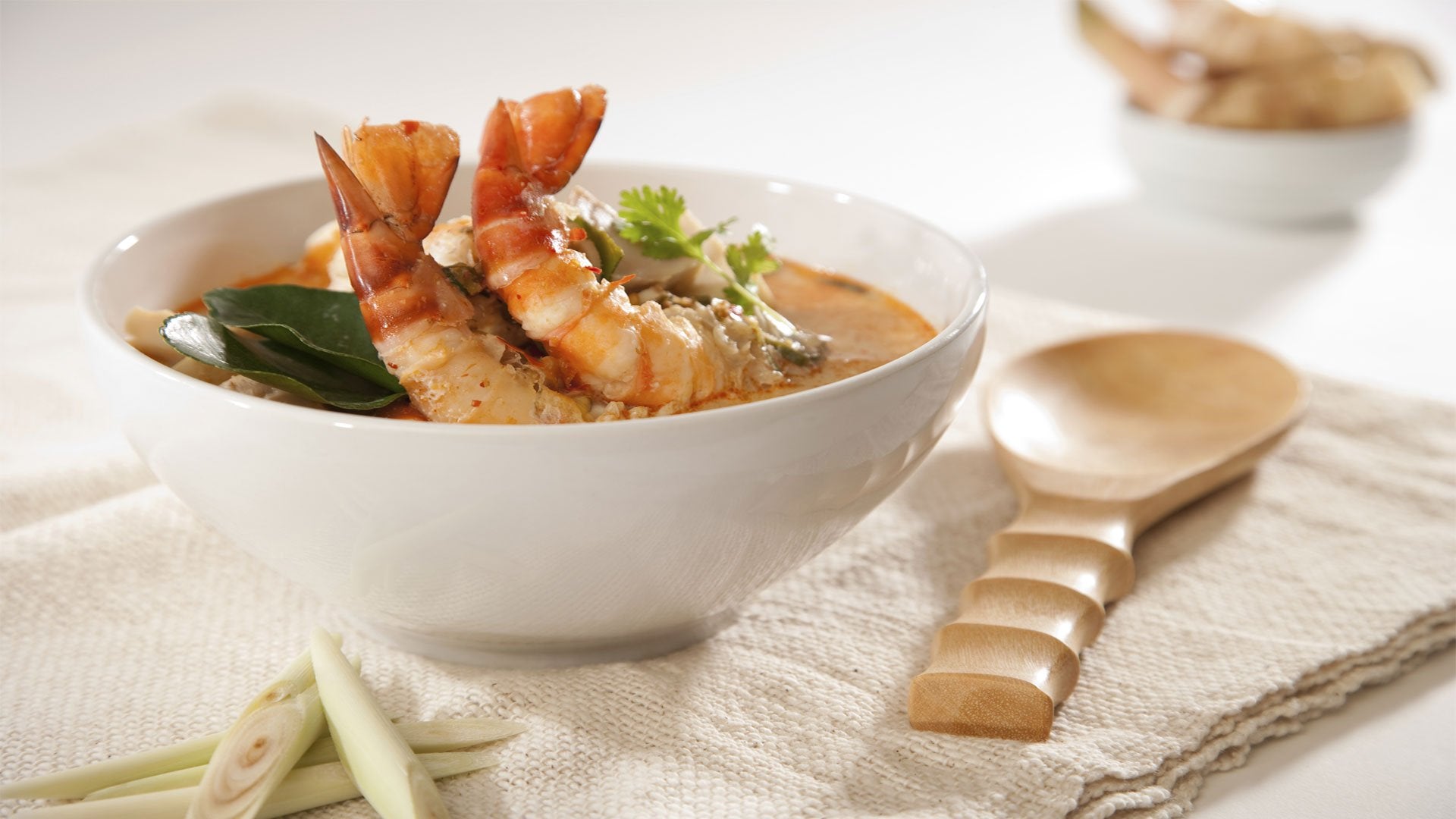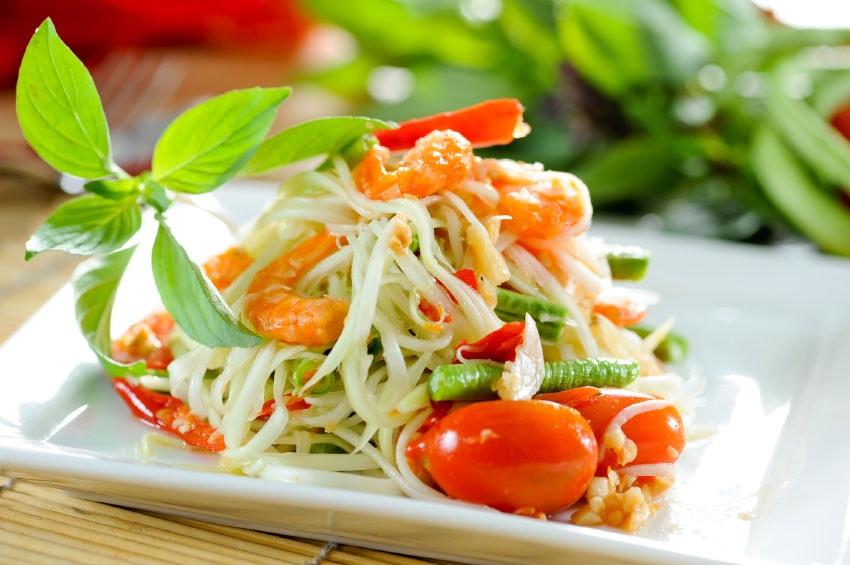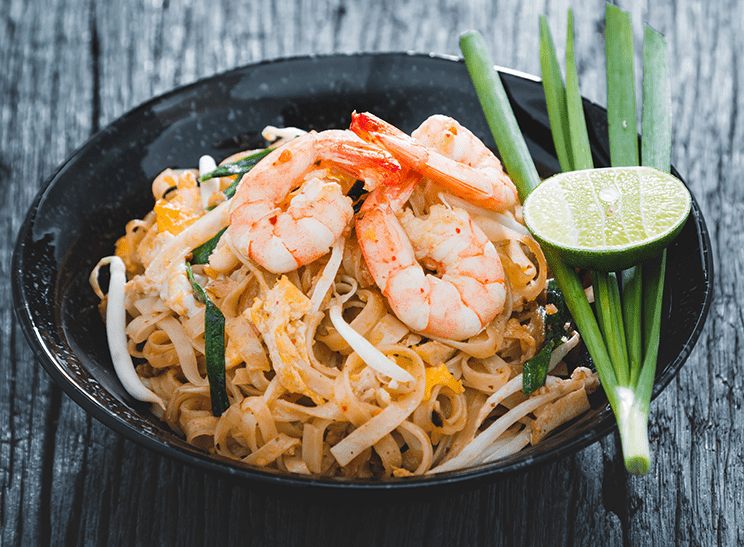From stir fries, desserts and dipping sauces, Thai palm sugar is a staple ingredient used in a range of Thai cooking and recipes. The Thai name for palm sugar is ‘Nam Taan Puek’ which actually translates to palm juice and depicts an idea of the process in which it is created (read more about this below). While palm sugar is available in different forms across South-East Asian countries like Malaysia and Indonesia, Thai palm sugar in particular primarily derives from coconut and toddy palm trees.
How is Palm Sugar Made?
Palm sugar is derived from the palm tree in a very similar manner to the way in which maple syrup is made. Cuts are created on specific areas of the palm tree stem which allows palm tree sap to pour out and be collected. This process typically occurs overnight and sap is collected throughout the morning and removed from the tree just before afternoon. Following this, the sap is boiled with water until the water evaporates and the sap remains in a crystallised form to create sugar. This simple and chemical-free process is why palm sugar is considered an unrefined sugar when it it’s in its purest form with no additional ingredients.
What Does Palm Sugar Taste Like?
What makes palm sugar different from regular granulated sugar? We’ve already explained how palm sugar is derived and this process is the first thing that makes palm sugar distinctly different from granulated sugar. However, the greatest difference ultimately comes down to taste. Palm sugar is renowned for having a unique caramel flavour, which adds more depth of flavour to recipes in comparison to the standard sweetness of cane sugar. Whether you’re cooking Pad Thai, Thai Green Curry or making a classic Peanut Sauce, this caramel flavouring is an essential component for achieving the authentic Thai taste.
Types of Palm Sugar

While palm sugar can come from a variety of palm trees and a variety of shapes, sizes, colours and textures, they can generally be used interchangeably in Thai cooking and it mostly comes down to personal preference. The main difference to note is in the composition of the different types of palm sugar, sometimes the ingredients and how different brands or even different batches from the same brand can vary slightly in sweetness or intensity of flavour. This is typically due to the palm sugar making process with factors such as tree condition, climate and timing having an effect. When shopping for palm sugar, you will typically find it in 3 main forms.
- Palm Sugar Paste: A smooth, liquid palm sugar paste which usually has an edible oil/wax coating to preserve its consistency.
- Palm Sugar Cup/Block: One thick and solid block of palm sugar.
- Palm Sugar Discs or Cubes: Smaller blocks or cubes, easier to manage.
How to Prepare Palm Sugar
One of the challenges of cooking with palm sugar is measuring the quantity required for a recipe when the sugar is in its hard, solid form (palm sugar blocks and discs). When palm sugar is hard, you will need to prepare and measure it before cooking within your recipes. Luckily, this is a pretty straightforward process with two methods:
Method 1 - Microwave
One method to solve this would be to soften the palm sugar. This method works particularly well with palm sugar cubes and discs. Simply place a cube/disc of palm sugar into a bowl with ½ tbsp of water and microwave roughly for 30 seconds (repeat at 10 second intervals if necessary) then mix with a spoon into a paste ready to measure and use in your cooking.
Method 2 - Pestle and Mortar
If you prefer not to microwave the palm sugar, you can also use a pestle and mortar to break and grind the palm sugar into a finer, more manageable granular state.
Tips for Using and Storing Palm Sugar:
- When using palm sugar from a tub (paste form), be sure to leave the layer of edible oil/wax on the surface to maintain the soft texture and consistency of the palm sugar.
- You can store palm sugar blocks and discs in a cool dark place like a cupboard but we recommend refrigerating paste palm sugar. Block palm sugar can store indefinitely when kept well.
- If you find that your batch of palm sugar isn’t sweet enough to your taste (although this isn’t common), you can add a small amount of granulated sugar to boost the sweetness.
- If you want a richer caramel flavour, opt for 100% palm sugar and those with a slightly darker appearance which often have a more distinct flavour.
-
In desserts, cakes and baking recipes, palm sugar paste is best to use in order to fully incorporate with other ingredients.
Top 5 Palm Sugar Recommendations:

-
Aroy-D Palm Sugar 454g - 8 pieces of 100% palm sugar in small, manageable sizes. Naturally thick, crumbly and perfect for melting before adding to recipes.
-
Thai Taste Palm Sugar - 85% palm sugar, blended with cane sugar for an enhanced sweet palm sugar taste
-
Red Drago Palm Sugar 500g - A large 500g block of palm sugar, ideal for shaving or grating before use in recipes.
-
Chang Palm Sugar 454g - Premium 100% palm sugar discs, perfectly portioned to use in recipes.
-
Chang Palm Sugar 500g Tub - Natural and authentic 100% palm sugar with a protective edible oil/wax layer to preserve the sugar.











Leave a comment